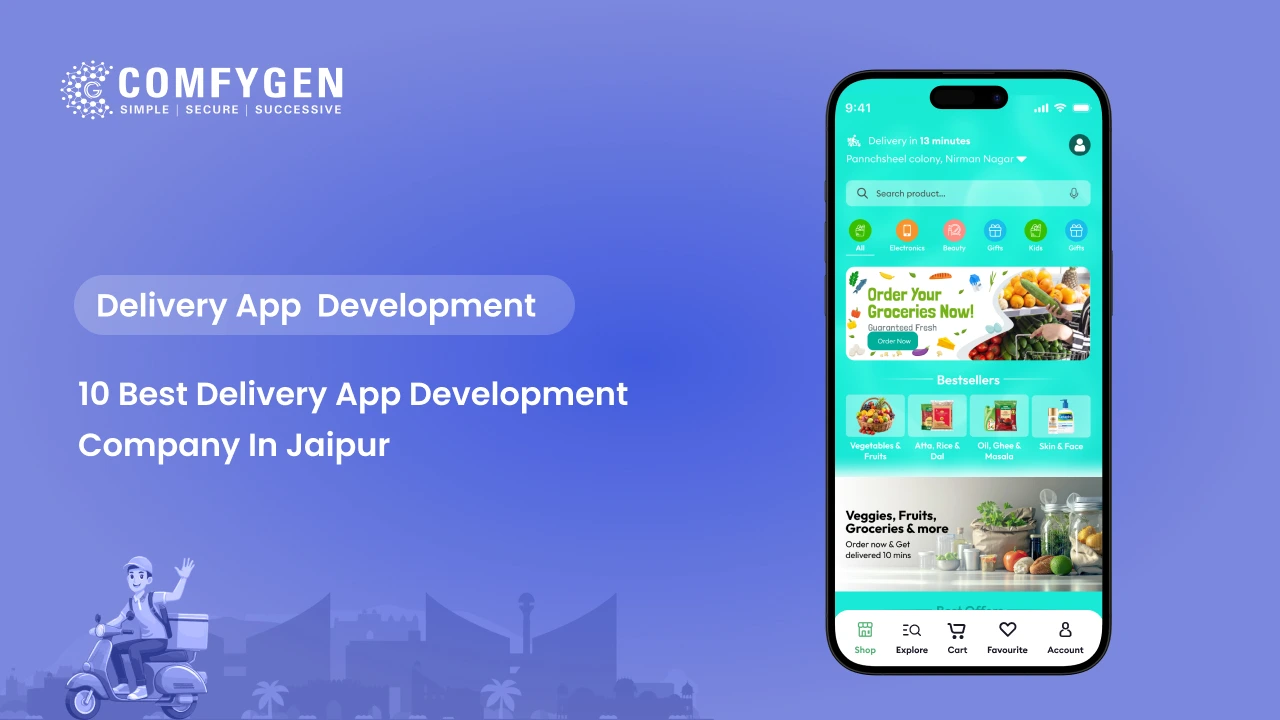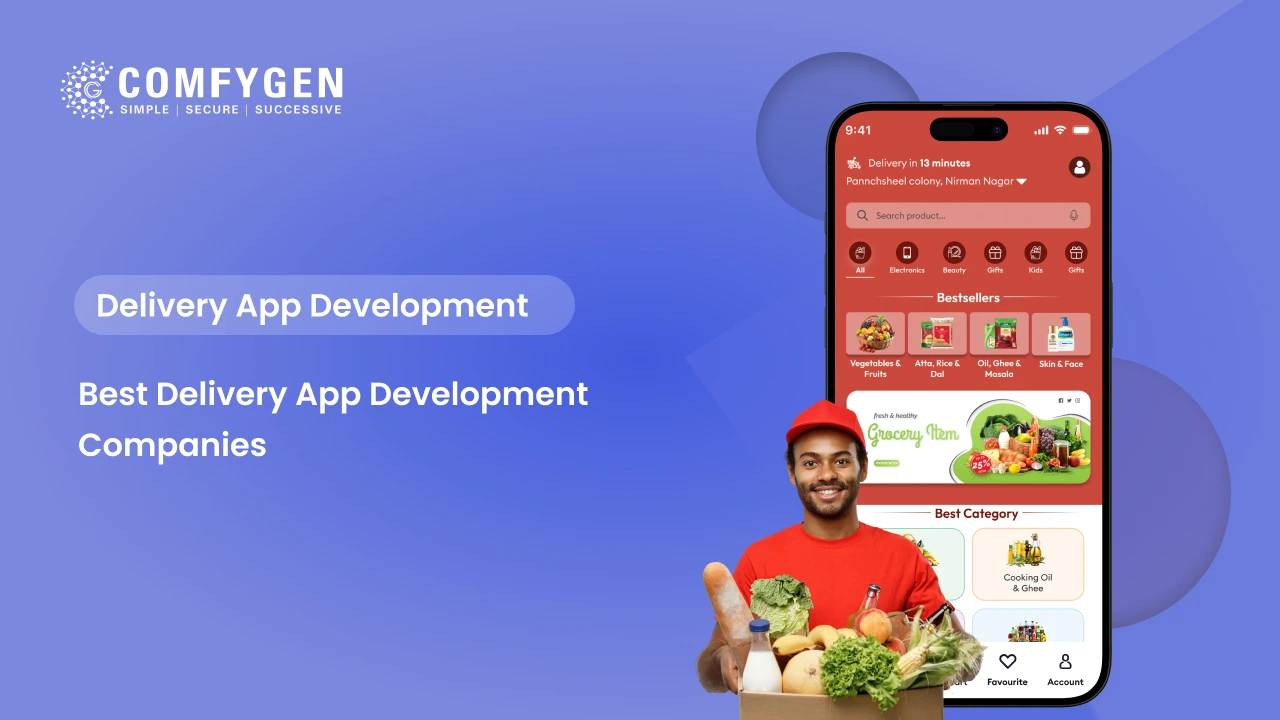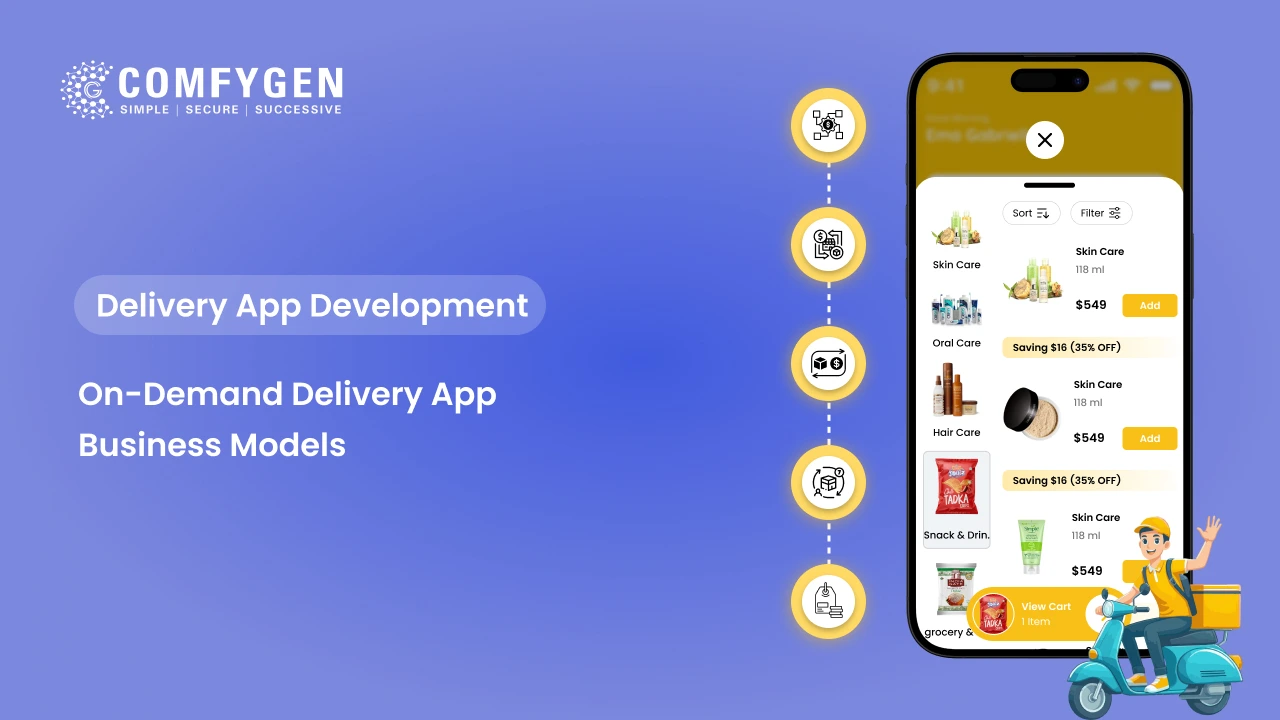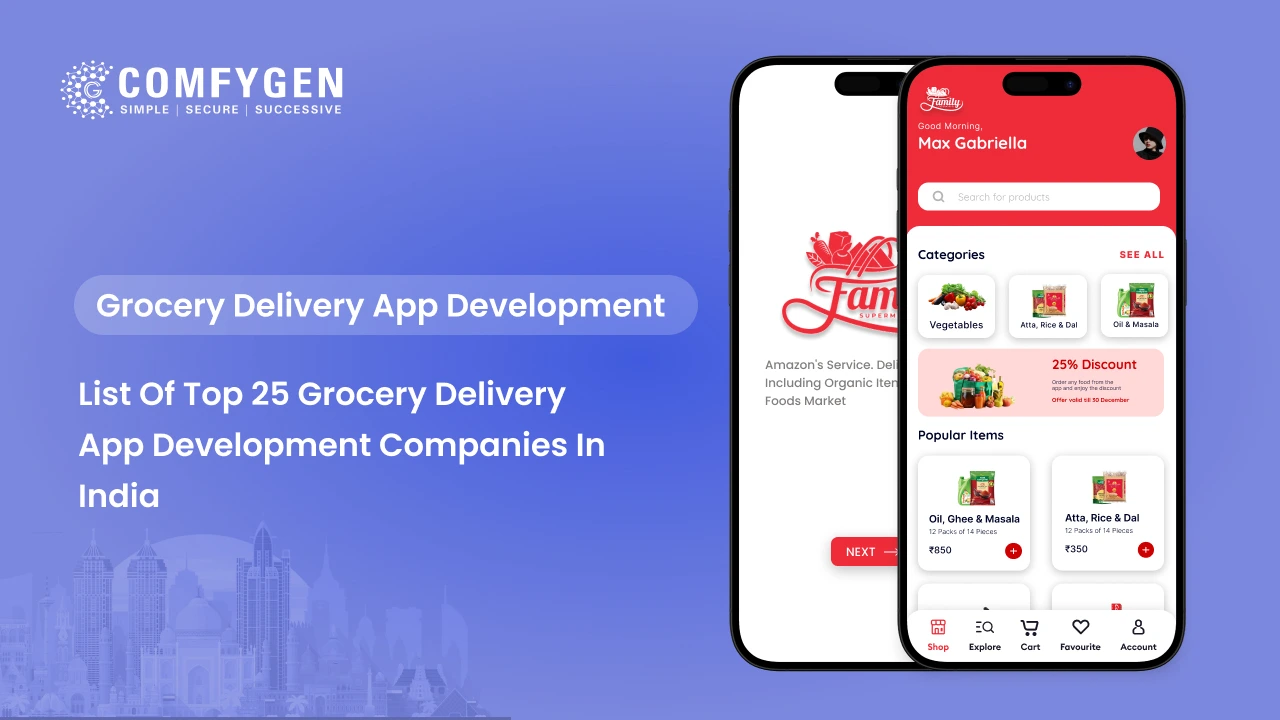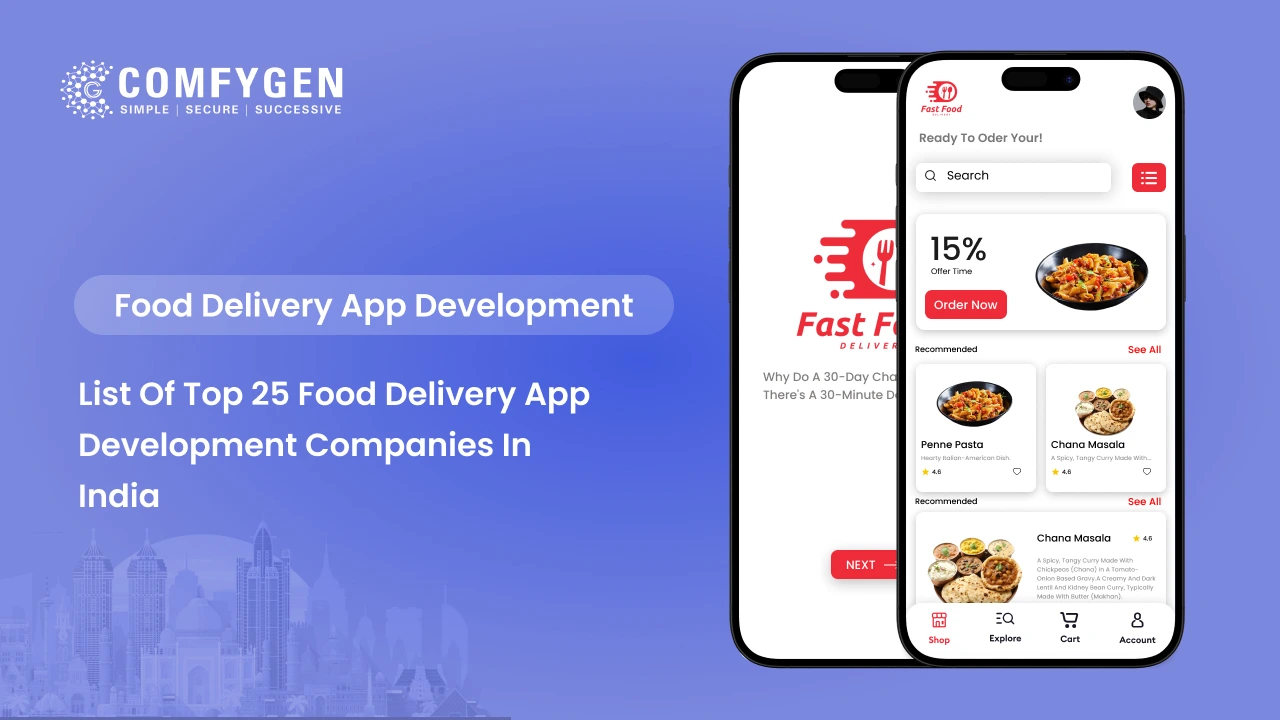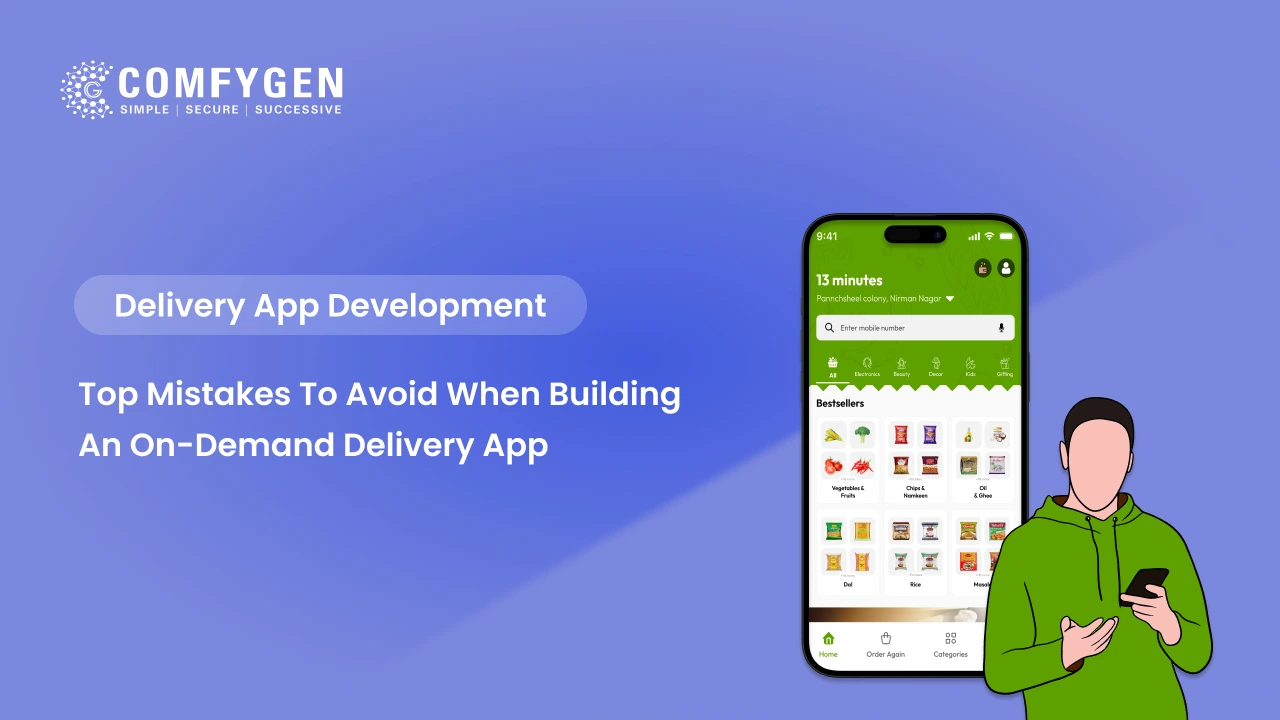How to Build a Food Delivery App like Talabat?
The online food delivery market has become one of the fastest-growing industries worldwide, and Talabat is a prime example of success in this space. Businesses and startups are now eager to build a food delivery app like Talabat to capture this booming market. With advanced technologies, seamless design, and the right strategy, launching a Talabat-like food delivery platform is possible.
In this blog, we’ll walk you through the features, development process, technology stack, cost, challenges, and revenue model of building a Talabat clone app.
What is Talabat?
Talabat is a widely recognized food delivery platform across the Middle East and North Africa (MENA). Especially in Dubai, it has become a go-to choice for customers, seamlessly connecting them with nearby restaurants and offering fast, reliable doorstep food delivery. The app has gained popularity due to its user-friendly interface, multiple payment options, real-time order tracking, and efficient delivery network.
Why Build a Food Delivery App like Talabat?
Creating a Talabat-like app offers entrepreneurs multiple opportunities:
- High Market Demand – With more users preferring online food delivery, demand is constantly increasing.
- Revenue Opportunities – You can earn through commissions, delivery charges, and advertisements.
- Customer Convenience – Digital platforms provide fast ordering, flexible payment options, and live tracking.
- Scalable Business Model – The Talabat business model works for startups, small businesses, and enterprises.
Key Features of a Talabat-like Food Delivery App
When planning food delivery app development, it’s important to focus on the key features of food delivery app development that enhance the experience for customers, restaurants, delivery partners, and admins. These features make the app user-friendly, reliable, and scalable, helping you build a strong platform like Talabat.
1. Customer App Features
Easy Registration & Login
A food delivery app must provide hassle-free registration options through email, mobile number, or social media login. Streamlined onboarding enhances user convenience, reduces drop-offs, and plays a vital role in improving customer engagement and long-term retention.
A Talabat-like app must also include secure authentication for data protection and personalized access.
Browse Restaurants & Menus
Users can explore nearby restaurants, filter by cuisine, pricing, or ratings, and view detailed menus with images. This feature ensures a smooth browsing experience, just like Talabat food delivery app, helping customers make informed choices before placing an order.
Smart Search & Filters
A powerful search and filtering system lets users find restaurants, dishes, or deals instantly. Using AI-based search in food delivery apps improves accuracy and convenience. With filters like price, ratings, or delivery time, customers save time while exploring food options.
Add to Cart & Checkout
This feature allows users to add multiple items to their cart and place an order with just a few clicks. A smooth checkout process in Talabat-like apps with saved addresses, offers, and delivery preferences enhances convenience and increases order completion rates.
Real-time Order Tracking
Customers can easily follow their order in real time, from the moment the restaurant starts preparing it until the food is delivered to their doorstep. This makes the process clear, simple, and more trustworthy.
Integrated with GPS and maps, this feature ensures transparency and trust. A real-time tracking system in food delivery apps like Talabat improves customer satisfaction by providing accurate delivery time estimates.
Multiple Payment Gateways
Providing secure and flexible payment methods like credit/debit cards, eWallets, net banking, and cash on delivery is essential. A Talabat-like app should integrate trusted payment gateways to ensure safe transactions, encouraging repeat purchases and boosting overall customer confidence.
Ratings & Reviews
This feature lets customers share their opinions about the restaurant, food taste, and delivery experience. It not only helps restaurants improve their service but also builds trust. Reviews also guide new users in selecting the best places to order from.
2. Restaurant Partner Features
Restaurant Registration & Profile Setup
Restaurants can register quickly and set up their profiles with essential details like address, menu, and working hours. In a Talabat-like food delivery app, this feature ensures restaurants reach wider audiences and start receiving orders without complex onboarding processes.
Menu Management
Restaurant partners can add, edit, or remove items, update pricing, and showcase deals. A dynamic menu management system in food delivery apps like Talabat keeps offerings updated, ensuring customers always see accurate details, boosting trust and minimizing order cancellations.
Order Management System
Restaurants can view incoming orders, accept or reject them, and manage preparation time efficiently. A Talabat clone app with advanced order management helps partners streamline workflow, avoid delays, and deliver food on time, improving both efficiency and customer satisfaction.
Real-time Order Notifications
Restaurants receive instant notifications for new orders, changes, or cancellations. This feature ensures no order is missed, improving accuracy. A real-time order alert system in food delivery apps keeps partners updated and helps maintain smooth communication with customers.
Earnings & Analytics Dashboard
An integrated dashboard allows restaurants to track daily sales, earnings, customer insights, and top-selling dishes. A Talabat-like restaurant dashboard helps partners analyze performance, optimize menus, and make business decisions to increase profitability.
3. Delivery Agent Features
Easy Sign-up & Verification
Delivery agents can register quickly with personal details, documents, and vehicle information. In a food delivery app like Talabat, secure verification ensures only trusted drivers join the platform, maintaining reliability and safety for customers and restaurants.
Delivery Request Notifications
Agents get instant notifications about new delivery requests, pick-up details, and customer addresses. A real-time delivery alert system in Talabat-like apps ensures faster acceptance and improved order fulfillment rates. This feature keeps delivery operations smooth and efficient.
Route Optimization & Navigation
Built-in GPS and maps help delivery agents find the quickest and most efficient routes. This smart navigation system saves time, lowers fuel costs, and ensures customers receive their food faster, improving overall satisfaction with timely deliveries.
Delivery History & Earnings Report
Agents can view completed deliveries, total distance covered, and daily/weekly earnings. A delivery history tracker in Talabat-like apps helps drivers analyze their performance, plan shifts better, and manage finances effectively.
4. Admin Panel Features
User Management
The admin panel allows management of customer accounts, restaurant profiles, and delivery agents. In a Talabat-like food delivery app, strong user management ensures smooth operations, data security, and better control over the platform.
Restaurant & Delivery Partner Management
Admins can onboard new restaurants, verify partners, and monitor delivery agents. A partner management system in food delivery apps like Talabat ensures quality services and keeps the ecosystem balanced and reliable.
Payment & Commission Control
The admin can manage commission rates, track payments, and process settlements with restaurants and delivery partners. A payment management system in Talabat clone apps ensures transparency and builds trust among all stakeholders.
Analytics & Reporting
Detailed reports on orders, revenue, customer behavior, and app performance help admins make data-driven decisions. A real-time analytics dashboard in food delivery apps like Talabat enhances growth and ensures effective business management.
Customer Support System
An integrated support system allows customers, restaurants, and delivery partners to resolve queries instantly. A customer support feature in Talabat-like apps boosts satisfaction, reduces churn, and ensures smoother operations.
Step-by-Step Guide: How to Build a Food Delivery App like Talabat
Building a Talabat-like food delivery app requires a structured approach, from research to launch, ensuring scalability, performance, and user satisfaction.
Step 1: Conduct Market Research
Before starting development, it’s important to study customer preferences, competitor apps, and food delivery trends in your target market. Detailed research helps identify gaps and define your unique selling proposition (USP).
For example, a Talabat-like food delivery app can stand out by offering faster delivery or better loyalty programs.
Step 2: Choose a Business Model
Selecting the right business model is crucial. An order-only model allows restaurants to manage deliveries, while the order and delivery model lets your platform handle logistics. Many startups prefer a hybrid food delivery app model, similar to Talabat, for maximum flexibility, revenue opportunities, and scalability.
Step 3: Select the Right Technology Stack
Choosing the right tech stack is very important to make a food delivery app that works fast and can grow easily. For cross-platform apps, you can use Flutter or React Native. The backend can be built with Node.js or Python, while MySQL or MongoDB can store data safely.
Adding Google Maps, secure payment options, and cloud hosting like AWS makes the app run smoothly, just like Talabat.
Step 4: Create Wireframes & UI/UX Design
A visually appealing and easy-to-use interface is the backbone of any food delivery mobile app. Wireframing helps map out the app flow, while UI/UX design focuses on intuitive navigation, modern layouts, and responsive designs.
A Talabat clone app should prioritize speed, simplicity, and customer convenience for better engagement.
Step 5: Start App Development
Once the design is finalized, begin coding the app with separate modules for customers, restaurants, delivery agents, and admins. Focus on integrating features like real-time tracking, multiple payment options, push notifications, and order management.
Building a Talabat-like food delivery app requires skilled mobile app developers and the latest frameworks to provide smooth functionality.
Step 6: Testing & Quality Assurance
The testing team provides your food delivery app works flawlessly before launch. QA experts should check for bugs, app crashes, payment failures, and security risks. Testing also verifies app speed, usability, and performance under heavy traffic.
A Talabat clone app development process must include rigorous testing for a seamless customer experience.
Step 7: Launch & Post-Launch Support
After successful testing, launch your online food delivery application like Talabat on iOS and Android stores. User retention requires continuous updates, security patches, and feature upgrades after launch.
Partnering with a food delivery app development firm provides long-term maintenance, helping your app stay competitive in the growing on-demand delivery market.
Ready to Build Your Own Food Delivery App?
Let’s Connect
Technology Stack for Talabat-like Food Delivery App
Choosing the right technology stack for your food delivery app like Talabat is scalable, secure, and offers high performance.
| Frontend Development | Flutter, React Native |
| Backend Development | Node.js, Django, Ruby on Rails |
| Database | MySQL, MongoDB, PostgreSQL |
| Cloud Services | AWS, Google Cloud |
| Payment Gateways | Stripe, PayPal, Razorpay |
| Push Notifications | Firebase Cloud Messaging |
| Geolocation Services | Google Maps API |
How Much Does it Cost to Build an App like Talabat?
The cost to build a food delivery app like Talabat depends on several key factors including the latest features, platform, application design, mobile app development team, and technology stack. Unlike a one-size-fits-all estimate, the cost varies depending on your customization needs and long-term scalability goals.
1. Features and App Complexity
The number of features directly impacts cost. A basic Talabat-like app with login, restaurant listing, order management, and payments may cost around $15K–$20K.
If you want advanced features like AI recommendations, multi-language support, GPS tracking, and loyalty programs, the cost can increase to $30K–$40K.
2. Platforms – Android, iOS, or Both
Developing for a single platform like Android or iOS is more budget-friendly, costing around $15K–$18K.
However, if you want a cross-platform Talabat clone app built with Flutter or React Native, the cost can go up to $25K–$35K, offering wider reach and higher ROI.
3. Technology Stack and Integrations
Using scalable frameworks like Flutter, Node.js, and MongoDB ensures performance but adds to development costs. Essential integrations like Google Maps, payment gateways, and push notifications cost around $10K–$15K.
For advanced integrations such as third-party logistics APIs or AI-powered chatbots, the cost may reach $20K–$25K.
4. UI/UX Design
A simple UI/UX design with basic layouts costs around $5K–$8K. But if you want a modern Talabat-like food delivery app design with interactive animations, custom illustrations, and personalized themes, the cost rises to $12K–$18K. Investing in UI/UX boosts engagement and long-term customer retention.
5. Development Team Expertise
Hiring freelancers or small teams may cost $10K–$15K, but quality is often compromised. A professional food delivery app development company with proven experience charges around $20K–$30K. Though slightly higher, expert developers ensure scalability, strong security, and post-launch support, which saves long-term maintenance costs.
Estimated Cost to Build a Talabat-like App
- Basic App (single platform, essential features): $15,000 – $25,000
- Mid-Level App (cross-platform, advanced features, better design): $30,000 – $45,000
- Advanced Talabat-like App (multi-platform, AI development features, real-time tracking, custom integrations): $50,000 – $70,000+
If you also want a dedicated website along with the app, the total cost may rise to $60,000 – $80,000, depending on design and functionality.
How Does Talabat Make Money?
The revenue model of Talabat is a perfect example for food delivery startups. It combines multiple earning streams to ensure profitability.
1. Commission Model
Talabat charges restaurants a fixed percentage commission on every successful order placed through the platform. This commission fee is a primary revenue source for the business.
The commission-based food delivery app model make sure steady income, while restaurants benefit from higher visibility, customer reach, and improved sales without heavy marketing efforts.
2. Delivery Charges
Customers pay a small food delivery fee for each order, depending on distance, order size, or delivery speed. These charges cover delivery partner costs. For startups building a Talabat-like food delivery app, delivery charges are a consistent revenue stream that balances operational expenses and enhances long-term sustainability.
3. Advertising Model
Restaurants often pay extra to get featured at the top of search results or homepage banners. This paid advertising model in food delivery apps like Talabat allows restaurants to increase visibility and attract more orders. It creates an additional revenue channel for the app while helping partners grow their businesses.
4. Subscription Model
Talabat also offers premium subscription plans for customers. By paying a monthly or yearly fee, users get benefits like free delivery, exclusive discounts, and priority service.
This subscription-based food delivery app model encourages customer loyalty, reduces churn, and generates recurring income for the platform.
Want to See a Demo of a Food Delivery App?
Get A Demo
How to Choose the Best On-Demand Food Delivery App Development Company?
Choosing the right food delivery app development company is the most crucial step for building a successful Talabat-like app.
Proven Experience in On-Demand App Development
Always choose the best food delivery app development company with strong expertise in on-demand delivery app development. Experienced developers understand industry challenges, user expectations, and modern trends.
This make sure your food delivery app is scalable, secure, and feature-rich. An expert food delivery application development team can also guide you with the best monetization strategies and growth opportunities.
Strong Portfolio with Food Delivery Projects
Look for food delivery apps like Uber Eats, Zomato, or Talabat developed by the company. Solid portfolios showcase technical expertise, UI/UX quality, and client success stories. Reviewing case studies and live apps helps you understand whether the team can deliver a high-performing food delivery mobile app development solution for your business.
Skilled Developers for iOS & Android Platforms
Make sure the team has skilled Android and iOS app developers who can create smooth, fast, and bug-free apps. A cross-platform development approach (using Flutter or React Native) is also cost-effective.
The right custom restaurant app development company will make sure your food ordering app reaches maximum users with scalability and high performance across all platforms.
Post-Launch Maintenance & Support Services
Building the food delivery app is only the first step—post-launch support and regular maintenance are equally important. Choose a top-rated custom food delivery app development company that provides bug fixing, updates, server monitoring, and performance optimization.
Long-term technical support make sure your food delivery app runs without downtime, adapts to new technologies, and keeps users engaged with fresh features.
Flexible Engagement Models
Every business has unique needs and budgets. The best companies offer flexible hiring and engagement models like fixed-cost, hourly, or dedicated teams. This gives startups and enterprises complete control over cost and timelines.
Flexibility in engagement ensures smooth collaboration, better resource management, and efficient delivery of your food delivery app.
Future Trends in Food Delivery App Development
The future of food delivery app development is driven by innovation and technology. Startups must adapt these trends to stay competitive.
AI & Machine Learning
Artificial intelligence in food delivery app development aids in making smart recommendations, forecasting demand, and offering personalized deals.
These technologies improve customer experience by predicting orders based on preferences. Restaurants also benefit from optimized delivery routes, sales forecasting, and better resource allocation, making AI a key trend in on-demand delivery apps.
Voice Search Integration
With voice-enabled technology, customers can easily order meals through Alexa, Siri, or Google Assistant. This feature enhances convenience, especially for multitasking users. By integrating voice search, food delivery apps gain a competitive edge and attract tech-savvy users. It also helps in faster ordering, improving customer retention and app usability.
Drone & Robot Deliveries
The future of AI food delivery logistics lies in drone and robot deliveries. These technologies reduce delivery time, cut operational costs, and minimize traffic issues.
Food Delivery companies like Talabat and Uber Eats are already experimenting with such innovations. Businesses can ensure customer delivery is faster, cost-efficient, and environmentally friendly by adopting autonomous delivery solutions.
Subscription-Based Services
Subscription models in food delivery apps are becoming popular. Customers pay a fixed monthly or yearly fee to enjoy benefits like free deliveries, exclusive discounts, and loyalty rewards.
This trend not only ensures steady revenue for businesses but also increases customer retention, making it a sustainable business strategy for future growth.
Conclusion
Building a food delivery app like Talabat is not just about adding features, but about creating a seamless ecosystem for users, restaurants, and delivery partners. Success depends on choosing the right technology stack, scalable architecture, user-friendly design, and a secure payment system.
From AI-driven recommendations to real-time tracking and advanced analytics, every element plays a crucial role in improving customer satisfaction and boosting business growth. With the rising competition in the online food delivery market, businesses need an app that is innovative, fast, and future-ready.
If you’re planning to develop a Talabat-like food delivery app, partnering with a trusted food delivery app development company like Comfygen ensures expert guidance, advanced solutions, and cost-effective development. With the right strategy and team, your food delivery startup can achieve long-term success in this booming digital marketplace.
FAQ
How much does it cost to build an AI food delivery app?
How long does it take to develop a Talabat-like food delivery app?
Can I build a white-label Talabat clone app?
How does Talabat earn money?

Mr. Saddam Husen, (CTO)
Mr. Saddam Husen, CTO at Comfygen, is a renowned Blockchain expert and IT consultant with extensive experience in blockchain development, crypto wallets, DeFi, ICOs, and smart contracts. Passionate about digital transformation, he helps businesses harness blockchain technology’s potential, driving innovation and enhancing IT infrastructure for global success.




